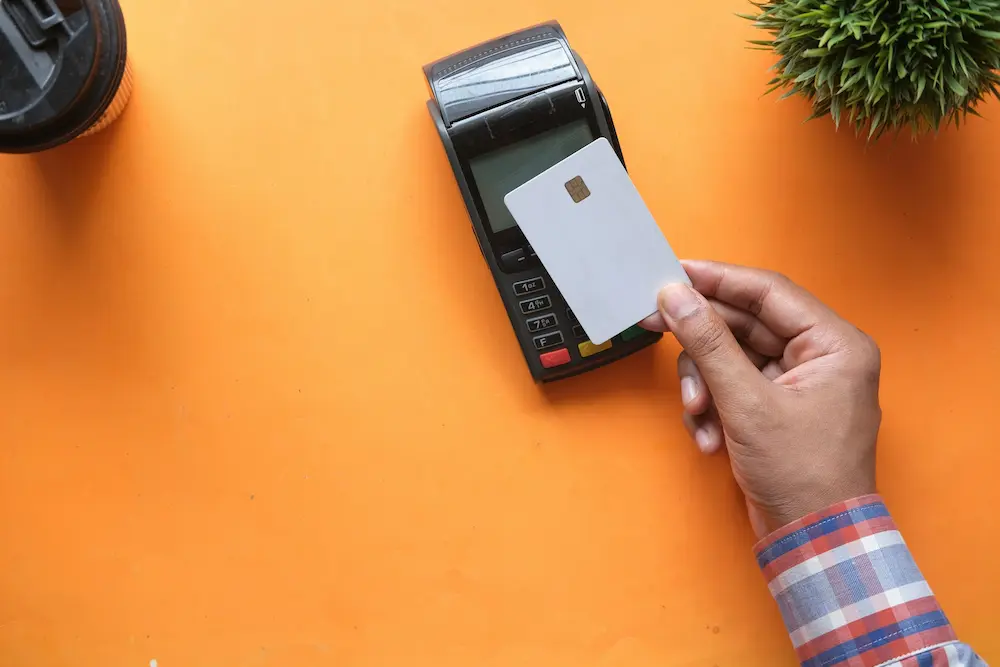E-commerce accounted for nearly 19% of retail sales worldwide in 2022. Now more than ever, people need secure payment methods to protect their personal and financial data in the rapidly growing digital marketplace.
One of the key questions online shoppers ask is whether it’s best to use a debit or a credit card. This article explores the advantages and disadvantages of both payment methods, highlighting their security features, potential risks, and best practices to ensure a safe and secure shopping experience.
Understanding how credit and debit cards work
Physically, credit and debit cards look nearly identical. They also work almost identically. You can use both to withdraw money from the ATM, make payments online or in stores, and set up recurring bill payments.
But there is one key distinction – a credit card lets you borrow money up to a certain limit set by the issuing bank. You’re expected to pay back the borrowed amount plus any applicable interest. On the other hand, a debit card is linked directly to your bank account, and transactions immediately withdraw funds from your account.
Security features
Another big difference between credit and debit cards has to do with security. Here are some notable security features for each payment option:
Credit:
- Credit card companies often allow you to dispute charges if you’re unsatisfied with a purchase or charged incorrectly.
- Many credit card companies offer free credit monitoring and send alerts for suspicious activities.
- Credit cards can be quickly frozen without immediate impact on your funds in case of loss or theft.
Debit:
- You will get an alert for each transaction, giving you complete visibility into what goes on with your account.
- While the rules are stricter, you can still get your money back for illegitimate or unauthorized transactions.
What are the risks when using “plastic money”
“Plastic money” is often used to describe debit and credit cards. While these payment methods have revolutionized how we conduct transactions, they come with inherent risks you should know.
Fraudulent transactions are the most glaring risk associated with debit and credit cards. They can happen through card theft, skimming devices, or data breaches.
Since credit and debit cards contain sensitive personal information, data theft is another legitimate concern. Data theft can lead to identity theft, where criminals could open new accounts under your name or incur debt.
ATM fraud is another risk, where criminals install card skimmers or hidden cameras to extract card information.
Best practices for safe digital transactions
In the past, all people had to do was watch for their cash not to get stolen. While the digital era has made transactions way more convenient, it also requires increased vigilance to protect against sophisticated threats like online fraud, identity theft, and data breaches.
Here are some best practices for secure digital transactions:
Monitor account statements
Both credit and debit accounts give you complete visibility into your transactions. Monitor your accounts regularly to identify potential unauthorized activity.
Shop on reputable websites
The internet is vast, and while most shops are legitimate, you will find a few bad apples. Be very selective about the websites you shop, and stick to verified and reputable marketplaces.
Use two-factor authentication (2FA)
Your online accounts, especially sensitive ones like banking, should be protected with 2FA for some added security beyond just a password. This can be done through an authentication app or smartphone features like face recognition.
Watch out for phishing scams
Phishing, and social engineering in general, is a very popular attack vector for cybercriminals. Never give out your banking details to unsolicited emails, phone calls, or messages claiming to be from your bank or a trusted institution.
The role of password managers
One problem many people face when trying to protect their online accounts is the sheer number of accounts that need protecting. Each account needs a strong password to prevent unauthorized access, but remembering dozens of unique, strong passwords is practically impossible without some form of assistance.
Password managers for phones make life so much easier because they allow you to generate complex passwords and store them securely inside a vault. This reduces the burden of remembering multiple passwords while enhancing online security, as one breached password wouldn’t let cybercriminals access others, potentially having some financial information stored.
But password managers can securely store not only your online accounts but also your credit and debit card information. Best if it’s in an encrypted vault. Then, your information is protected from unauthorized access much more than if you take a picture of your card or store it in your notes app. Password managers reduce the risk of this data being stolen or misused.
Credit vs Debit: Which is safer?
Many resources can help you determine whether you need a credit or debit card depending on your needs. However, regarding security, it’s generally acknowledged that credit cards offer more robust protections against fraud and unauthorized transactions.
Let’s break this down a bit more for clarification:
Credit cards provide a buffer between the transaction and your bank funds, giving you more time to identify and dispute fraudulent charges without immediate financial impact. Debit cards, while convenient, require a more proactive approach to monitor and report any unauthorized use.
Conclusion
Credit and debit cards are excellent modern payment methods that make it quick and easy to do shopping online or in brick-and-mortar stores. While both offer convenience, it’s important to understand their differences, especially regarding security. The choice between credit and debit cards ultimately depends on your financial habits and the level of security you’re comfortable with.

